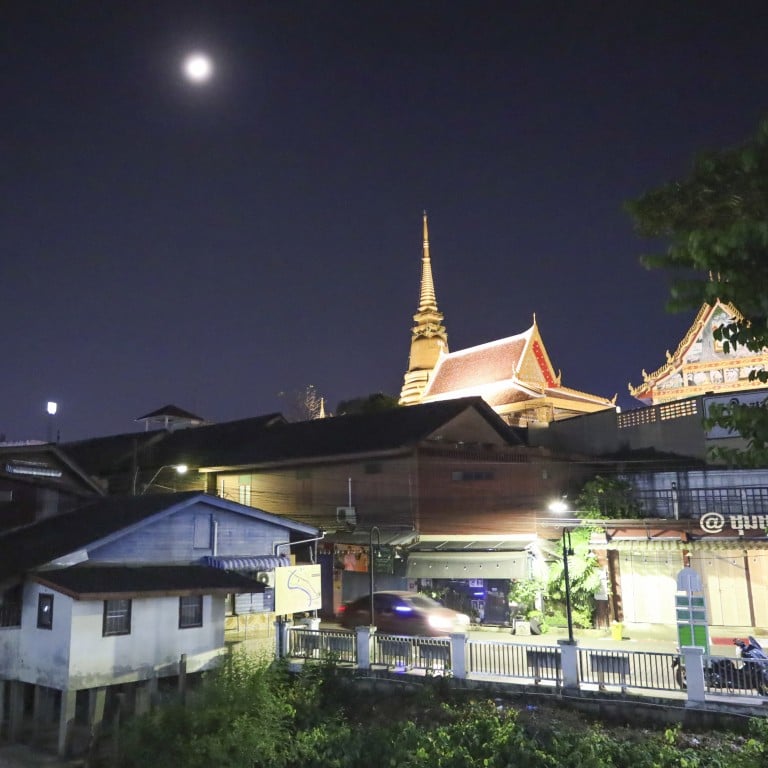
This rising Thailand holiday location is fast gaining a reputation as a great weekend break from Bangkok
- Chanthaburi, about 250km to the southeast of Bangkok, near the Cambodian border, is an ideal short holiday location for those looking to escape the capital
- It’s an ideal size for those who like to get acquainted with a place on foot, but also offers some real gems for those prepared to wander further
The gem dealers’ quarter in the Thai town of Chanthaburi is a warren of jewellers, stonecutters, wholesalers and retailers.
Midweek visitors to the area – south of the old centre, around Trok Kachang and Thanon Sri Chan, the latter signposted as “Siam Gem Street” in English – browse gems piled in porcelain bowls like confectionery in a sweet shop.
“You should have come on the weekend,” a gem-cutter tells me, his eyeglass fixed in place like an appendage. “It’s much busier then.”
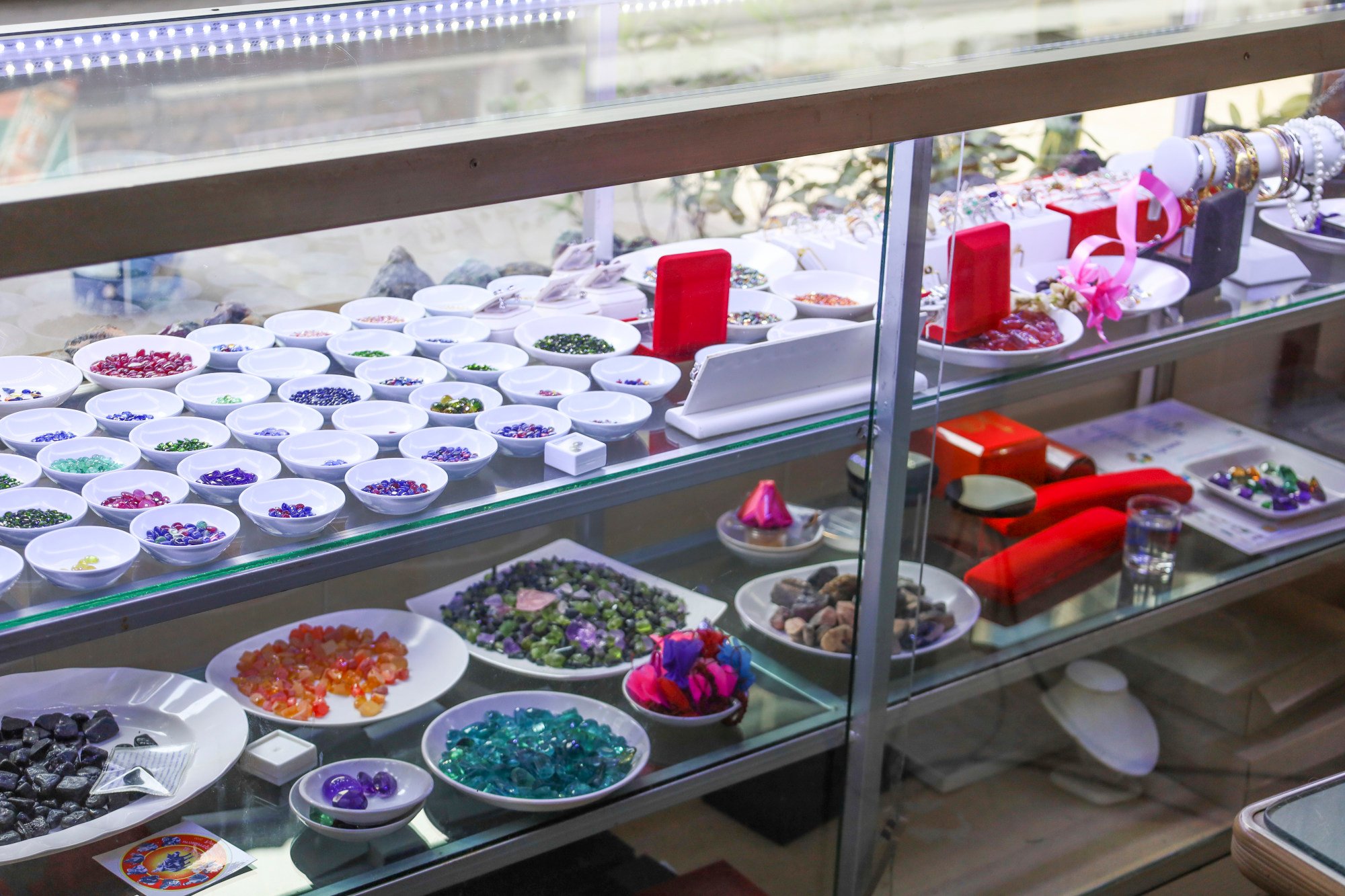
Chanthaburi, about 250km (155 miles) to the southeast of Bangkok, near the Cambodian border, is gaining a reputation as a weekend retreat from the capital, but I am happy to be visiting while only a few tourists stalk the sites.
Chanthaburi is an ideal size for those who like to get acquainted with a place on foot – after a coffee.
What to do and see at Finland’s mental hospital turned visitor attraction
Koff House is an airy cafe in front of which, on a bank of the Chanthaburi river, old mining tools are arranged as though they are in a sculpture exhibition. It is a reminder that for 500 years, the sapphires and rubies that streaked east Thailand’s hills and mountains drew fortune hunters from China, Myanmar, Cambodia and Vietnam – the seeds of a population that is unusually cosmopolitan for a provincial Thai town.
One thread of Chanthaburi’s ethnic tapestry can be unpicked upstream, along the river’s promenade, where Chinese temples stand on either side of the water. They were established by merchants from China and are maintained by their descendants.
A man fixing some overhead lanterns at the Sa Bap Shrine says I may enter, so I kick off my shoes and step in to pay my respects to dusty Taoist effigies framed by elephant tusks, the Chinese character shen (“god”) dominating the rear wall.
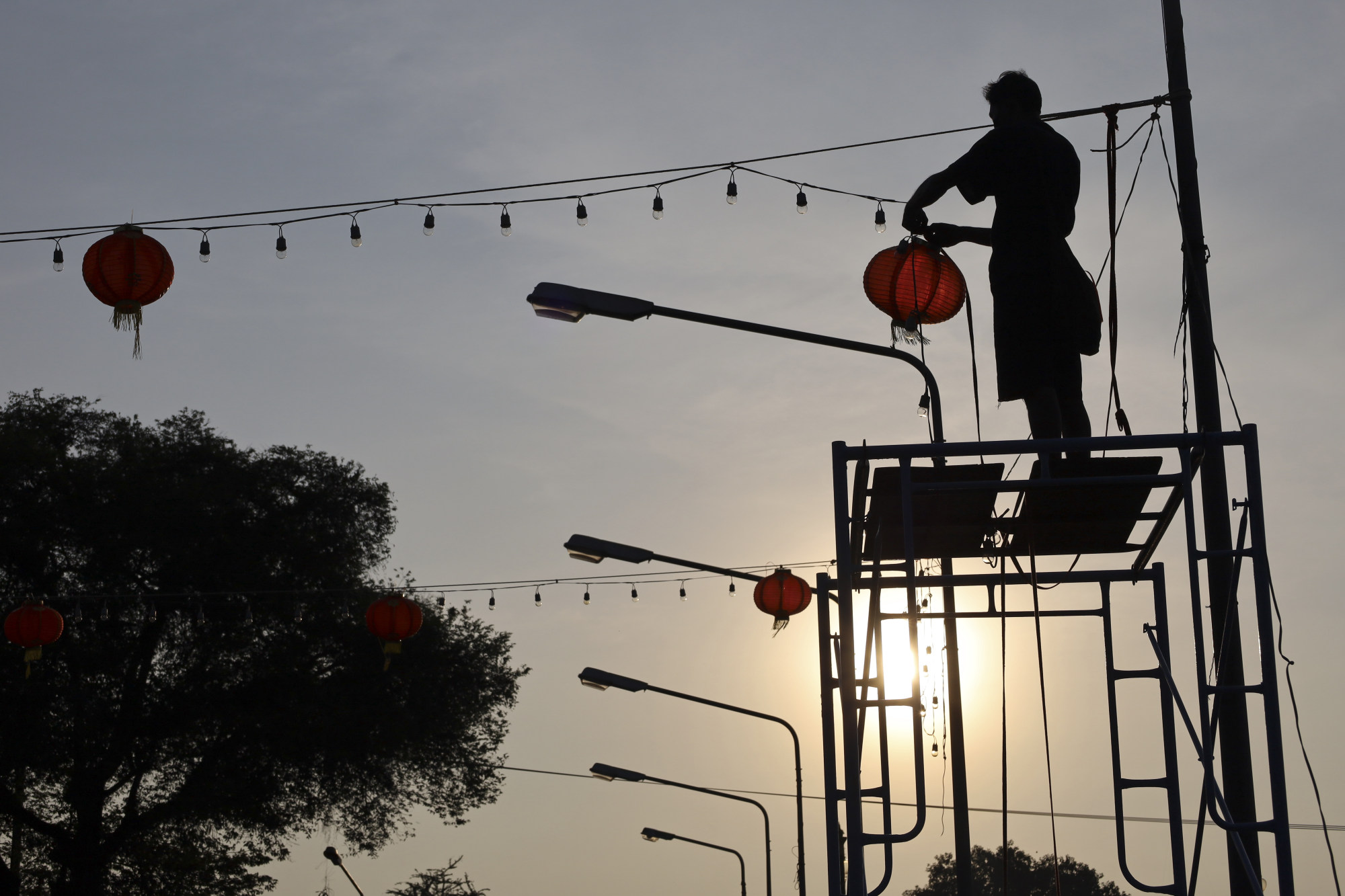
The city’s showcase religious building is not of Chinese design, though, but Catholic European by way of Vietnam. The Cathedral of the Immaculate Conception is situated upriver, near a bustling wet market.
A tourist plaque explains that this imposing Gothic structure – the largest in Thailand – was established by Vietnamese converts fleeing persecution, who arrived in Chanthaburi in the 1700s.
Although this incarnation of the cathedral dates back only 100 years or so, it stands as testament to a tradition of openness that runs as deep as the mineshafts through the surrounding hills.
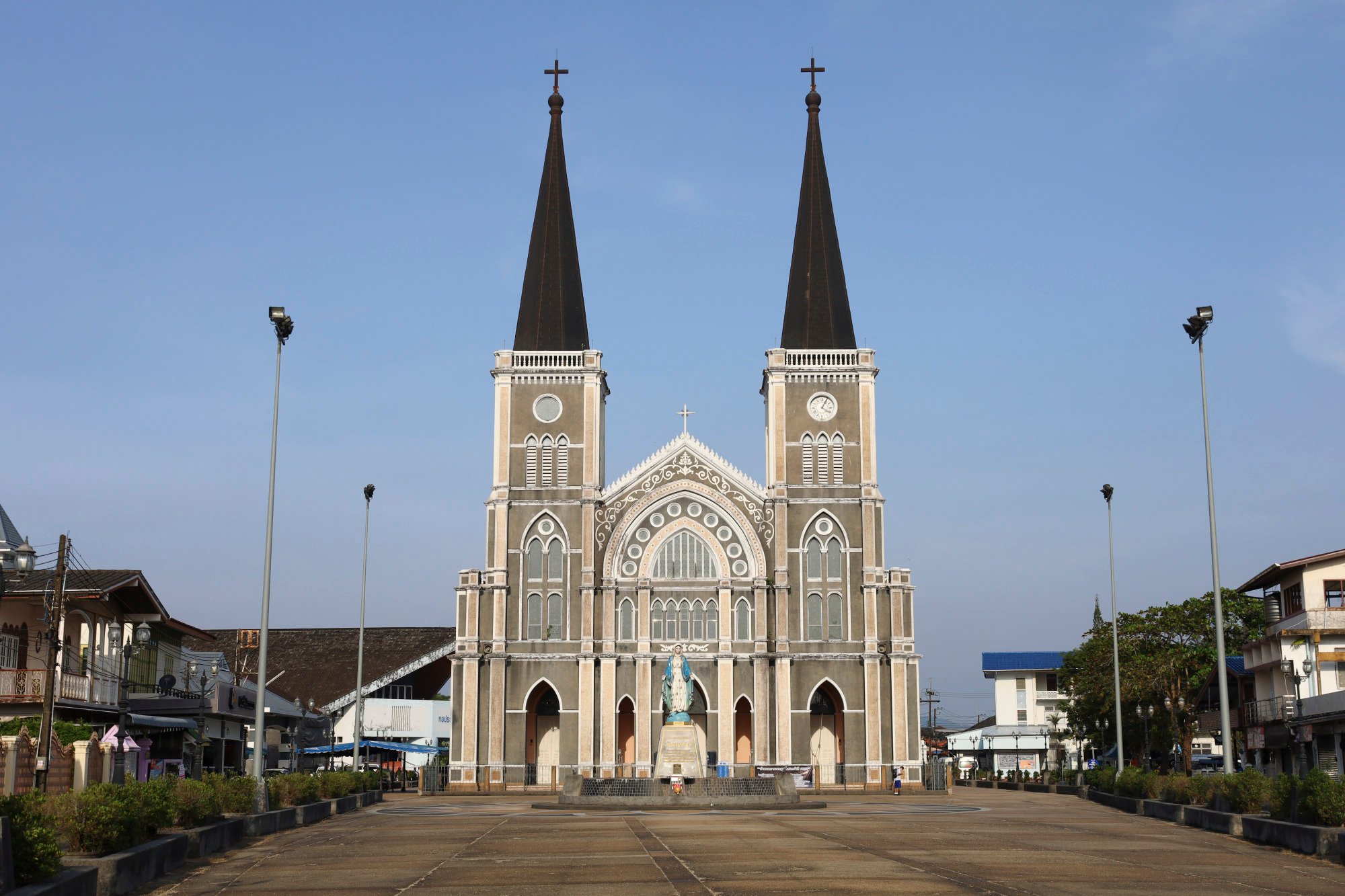
At dusk, chirping birds congregate on overhead power lines to serenade a tropical sunset before the stars appear over the golden rooftop of Wat Bot Muang. I take a seat on the terrace of a restaurant called Taste, which looks across at the Chantaboon riverfront.
Taste serves Italian fare, and offers another expression of Chanthaburi’s cosmopolitan character.
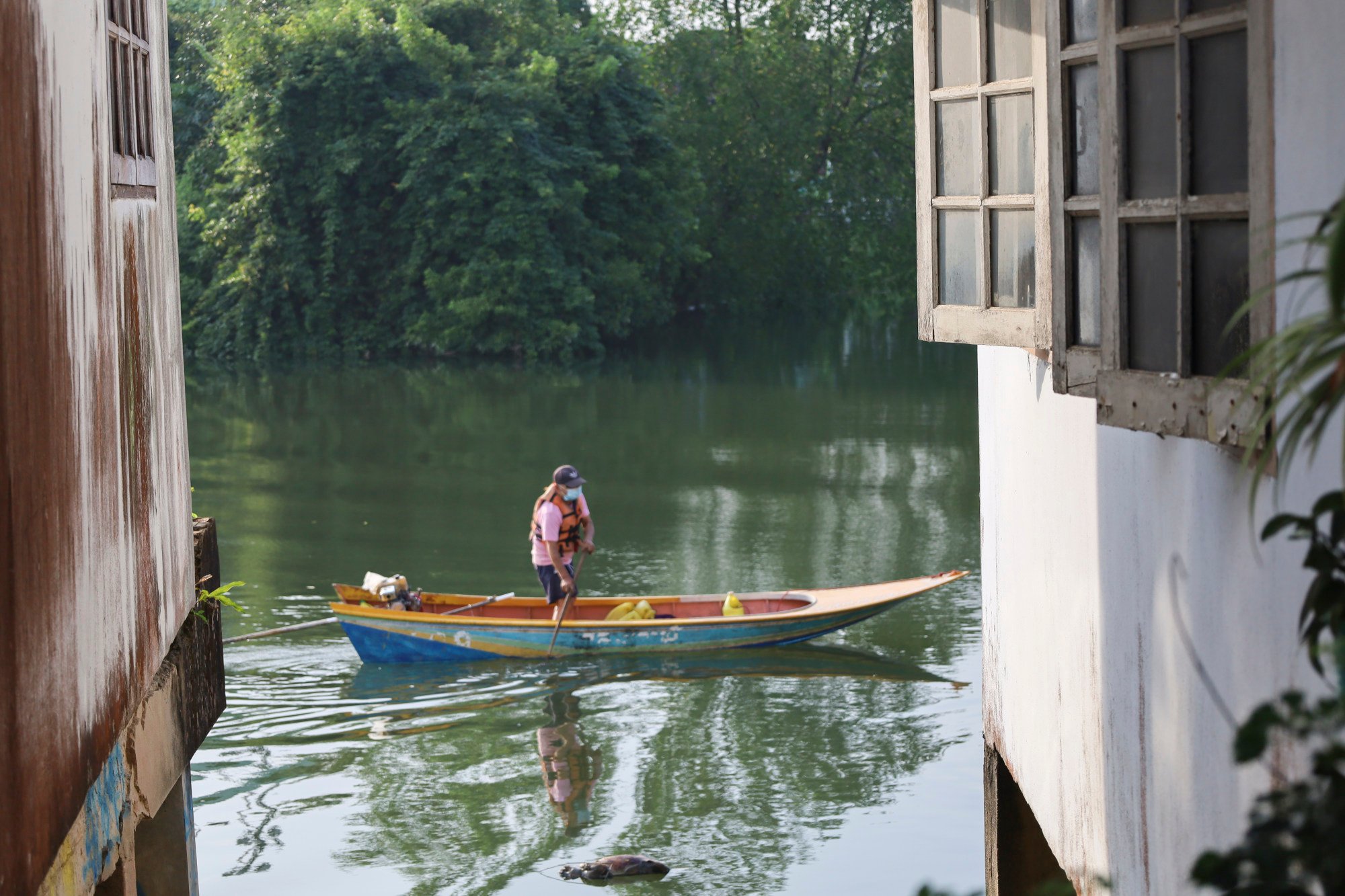
As I devour a bowl of spaghetti, he lists some of the local highlights. “The province has several dedicated national parks occupying the hills where the gem mines used to be,” he explains, before opening a smartphone map app to show me the route to nearby Namtok Phlio National Park.
I rise the next morning, while Chanthaburi slumbers, and set off on a rented scooter.
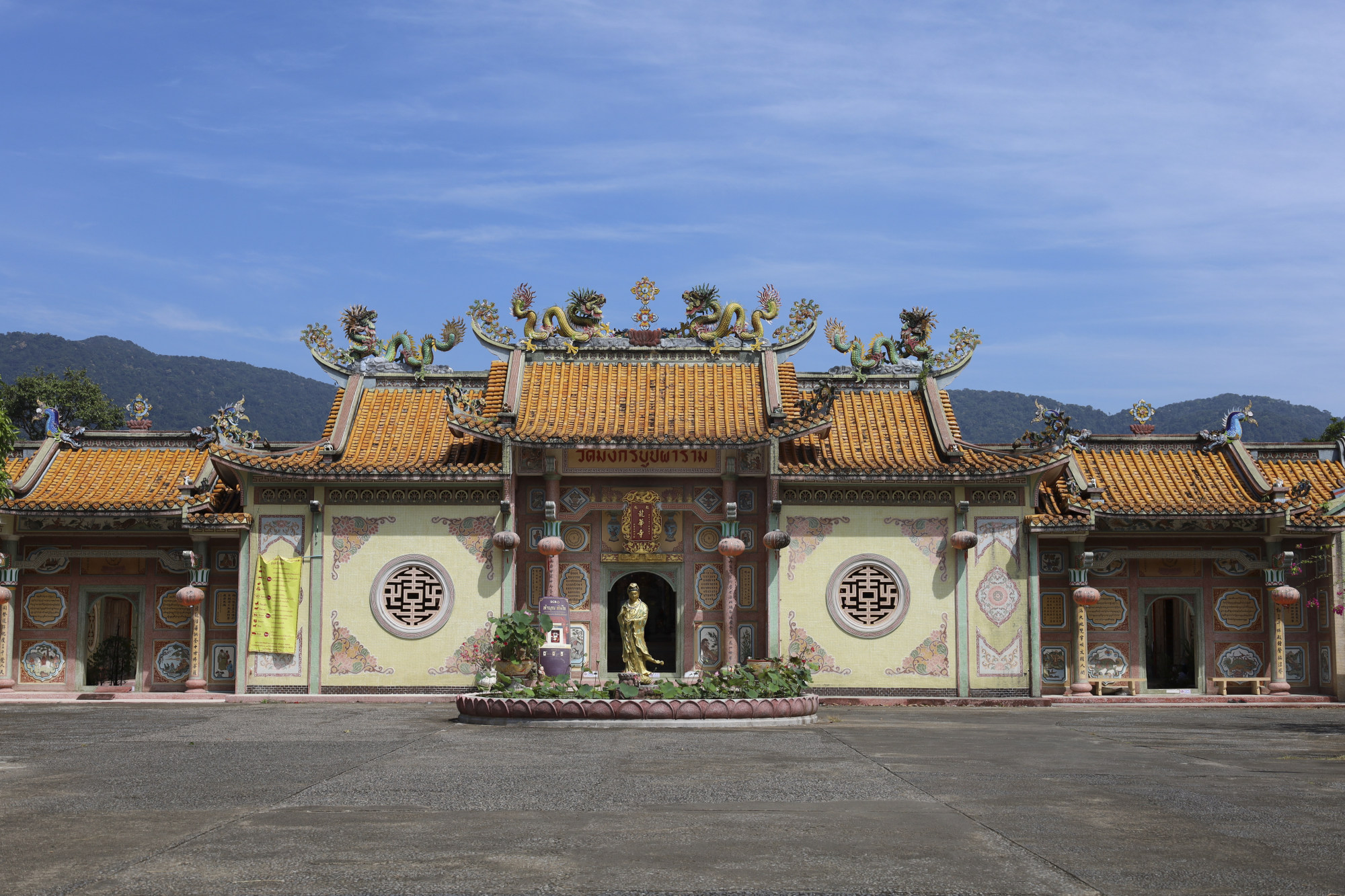
For several kilometres southwards, the road flanks the mangrove-lined Chanthaburi, which is a reminder of what rivers are supposed to look like, without concrete banks to direct the flow. Birds and boatmen on the water contribute to a scene worthy of an old Siamese watercolour.
Veering east across Highway 3, I chance upon the spectacular Wat Mangkon Buppharam, which is said to be the brother temple of Bangkok Chinatown’s Wat Mangkon Kamalawat. Both are called Longhua Si in Chinese.
Yet with the Sa Bap mountain range as a backdrop, the temple complex here looks more like the set of a Hong Kong historical drama than a busy place of worship.
‘A real game changer in conservation’: elephant safaris in a plantation
The entrance to the Namtok Phlio National Park is just beyond. Having parked outside the ticket kiosk, I pay 200 baht (US$6) to enter the 130 square kilometres (50 square miles) or so of protected forest.
Thais are bathing in the pool below the epic waterfall that shares the park’s name.
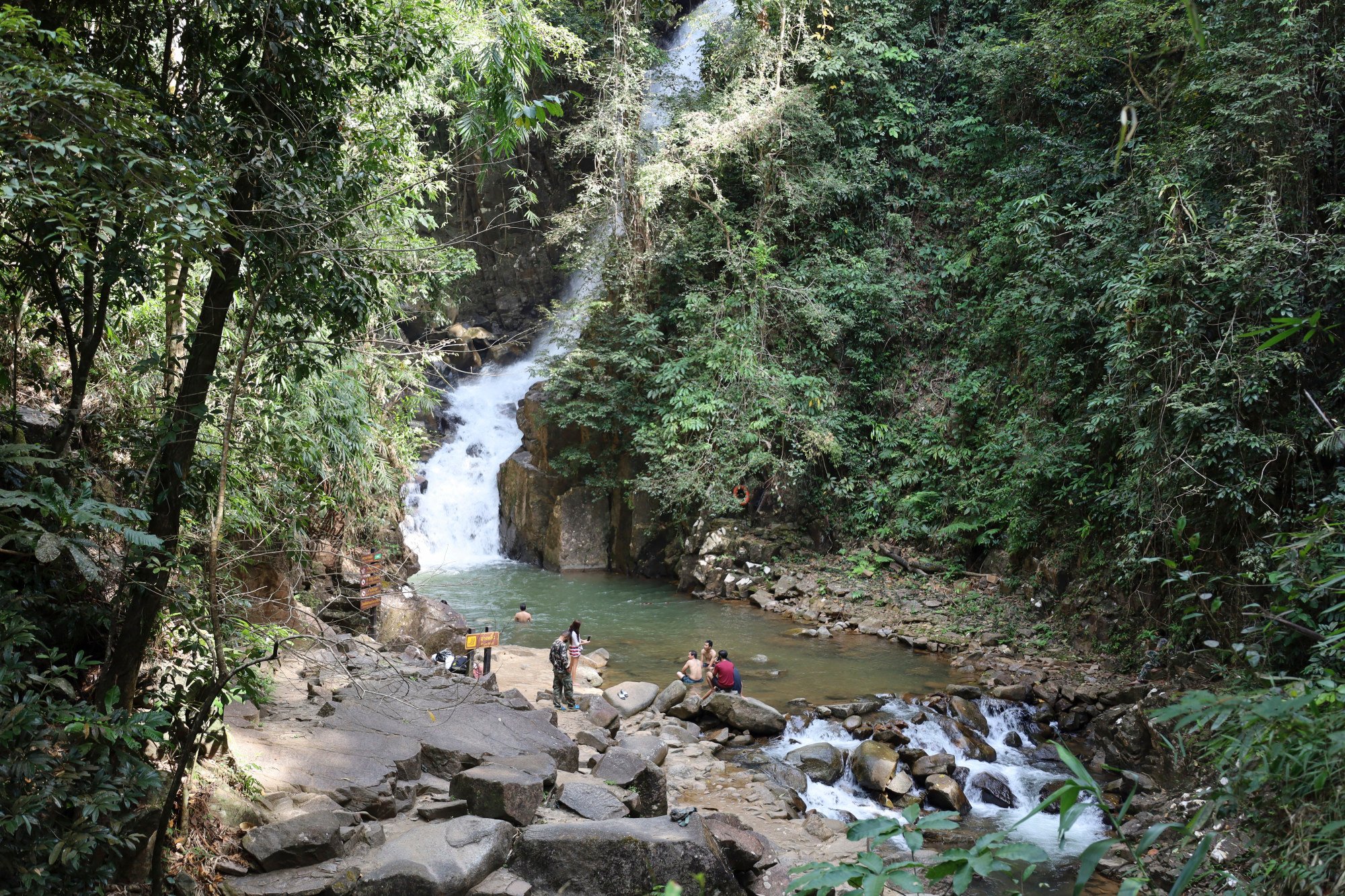
I peel off my sweat-soaked shirt and leap into the cool mountain water. Fish are easy to spot in the clear water and they are not shy of the people intruding on their habitat, nipping dead skin from toes.
I had not imagined my journey would culminate in being nibbled by black carp in the jungle, but that is the beauty of wandering, when detours and chance encounters lead to the gems travellers prospect for.

